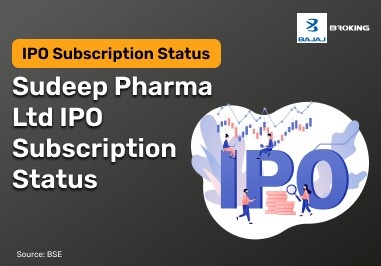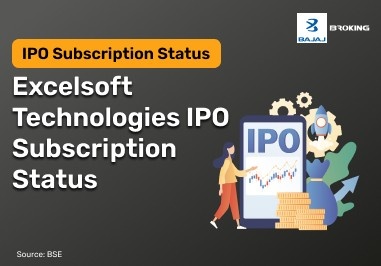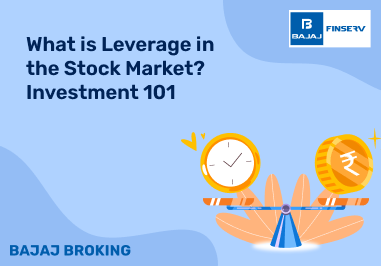Top 5 Small Cap FMCG Stocks in India You Should Know
The table below highlights leading small cap FMCG companies in India based on market capitalization. It covers key performance metrics such as current price, valuation, returns, and financial strength.
Company Name
| Market Cap (₹ Cr)
| CMP (₹)
| P/E Ratio
| 6-Month Return (%)
| ROCE (%)
| Dividend Yield (%)
|
Vadilal Industries
| 4,512.66
| 6,276.30
| 28.93
| 58.29
| 27.14
| 0.02
|
Heritage Foods
| 3,917.85
| 422.20
| 20.55
| -32.93
| 16.15
| 0.59
|
Gopal Snacks
| 3,529.93
| 283.25
| 41.72
| -40.05
| 32.00
| 0.35
|
Sundrop Brands
| 3,043.64
| 807.40
| 443.03
| -14.58
| 2.69
| 0.37
|
Prataap Snacks
| 3,001.13
| 1,257.10
| 153.83
| 11.07
| 10.69
| 0.16
|
Source: Screener as of 18 Apr’25
Overview of Small Cap FMCG Stocks
This summary table provides a quick snapshot of the same companies, focusing on their most recent profit, sales, and quarterly performance changes.
Company Name
| Net Profit (₹ Cr)
| Profit Change (%)
| Sales (₹ Cr)
| Sales Change (%)
| 5Y Profit Growth (%)
|
Vadilal Industries
| 11.93
| 29.11
| 203.85
| 16.98
| 34.17
|
Heritage Foods
| 43.05
| 60.04
| 1,033.94
| 9.87
| 4.28
|
Gopal Snacks
| 5.32
| -70.26
| 393.57
| 7.07
| –
|
Sundrop Brands
| 3.91
| 167.46
| 208.30
| 8.03
| -23.54
|
Prataap Snacks
| -37.93
| -133.27
| 444.61
| 8.89
| 3.61
|
Source: Screener
Vadilal Industries Ltd
Vadilal Industries is a small cap FMCG company operating in the processed foods segment, with a strong presence in the ice cream and frozen dessert market. It has delivered consistent profit growth over the last five years and maintains healthy return ratios. The company has also managed to reduce its debt, strengthening its financial standing.
Key Metrics for Vadilal Industries
Metric
| Value
|
Market Cap
| ₹4,513 Cr
|
Current Market Price (CMP)
| ₹6,276
|
Price to Earnings (P/E) Ratio
| 28.9
|
Dividend Yield
| 0.02%
|
ROCE
| 27.1%
|
ROE
| 31.0%
|
6-Month Return
| 58.29%
|
5-Year Profit CAGR
| 34.2%
|
Source: Screener
Key Highlights:
● Strong 5-year profit growth CAGR of 34.2%
● ROCE and ROE remain consistently high at 27.1% and 31.0% respectively
● The company is largely debt-free
Heritage Foods Ltd
Heritage Foods focuses on dairy-based FMCG products and has a notable presence in South India. The company has seen robust quarterly profit growth, supported by operational efficiencies. While its ROE is moderate, it maintains a stable dividend payout and benefits from a diversified product range.
Key Metrics for Heritage Foods
Metric
| Value
|
Market Cap
| ₹3,918 Cr
|
Current Market Price (CMP)
| ₹422
|
Price to Earnings (P/E) Ratio
| 20.6
|
Dividend Yield
| 0.59%
|
ROCE
| 16.2%
|
ROE
| 13.3%
|
6-Month Return
| -32.93%
|
5-Year Profit Growth
| 4.28%
|
Source: Screener
Key Highlights:
● Quarterly profit variation shows 60% increase
● Healthy dividend payout record
● Moderate return ratios and negative near-term returns
Gopal Snacks Ltd
Gopal Snacks, operating primarily in the savoury snacks segment, has recently gone public and features high return ratios despite a recent decline in profitability. It is nearly debt-free and shows solid capital efficiency metrics, making it a notable player in the small cap FMCG space.
Key Metrics for Gopal Snacks
Metric
| Value
|
Market Cap
| ₹3,530 Cr
|
Current Market Price (CMP)
| ₹283
|
Price to Earnings (P/E) Ratio
| 41.7
|
Dividend Yield
| 0.35%
|
ROCE
| 32.0%
|
ROE
| 29.2%
|
6-Month Return
| -40.05%
|
Source: Screener
Key Highlights:
● Nearly debt-free with ROCE of 32.0%
● Strong equity efficiency despite profit dip
● Listed in FMCG – Food Processing category
Sundrop Brands Ltd
Sundrop Brands is active in the branded edible oils and food ingredients segment. Despite high valuations and modest return ratios, the company offers stable dividends and maintains a low-debt profile. However, long-term sales growth and promoter holding trends show challenges.
Key Metrics for Sundrop Brands
Metric
| Value
|
Market Cap
| ₹3,044 Cr
|
Current Market Price (CMP)
| ₹807
|
Price to Earnings (P/E) Ratio
| 443.0
|
Dividend Yield
| 0.37%
|
ROCE
| 2.69%
|
ROE
| 1.73%
|
5-Year Profit Growth
| -23.54%
|
Source: Screener
Key Highlights:
● High P/E ratio signals valuation concern
● ROCE and ROE are below sector averages
● Promoter stake declined by 17.8% in the last quarter
Prataap Snacks Ltd
Prataap Snacks is known for its wide range of packaged snacks and has a pan-India presence. While recent profitability has been under pressure, the company maintains a strong distribution network. It is also almost debt-free and retains moderate dividend payout practices.
Key Metrics for Prataap Snacks
Metric
| Value
|
Market Cap
| ₹3,001 Cr
|
Current Market Price (CMP)
| ₹1,257
|
Price to Earnings (P/E) Ratio
| 154.0
|
Dividend Yield
| 0.16%
|
ROCE
| 10.7%
|
ROE
| 7.6%
|
5-Year Profit Growth
| 3.61%
|
Source: Screener
Key Highlights:
● Debt-free and consistent dividend payer
● Moderate ROCE of 10.7%
● P/E valuation remains elevated
How To Invest In Small Cap FMCG Stocks?
Effective investment in this segment involves a structured approach:
● Research: Analyze company fundamentals, market position, and sector trends.
● Diversification: Combine small cap FMCG stocks with other market segments to spread risk.
● Use of Tools: Employ brokerage calculators to estimate costs and manage trades efficiently.
● Trading Platforms: Maintain active trading and demat accounts for seamless transactions.
● Leverage Trading Strategies: Utilize margin trading facilities (MTF) and intraday trading cautiously.
● Stay Informed: Track upcoming IPOs and monitor economic and consumer behavior changes.
● Consider ETFs/Mutual Funds: For broader exposure with reduced individual stock risk.
Conclusion
The small cap FMCG sector continues to play a pivotal role in India’s consumption-driven economy, particularly through its presence in rural and semi-urban markets. Backed by favourable government policies, evolving consumer preferences, and digital transformation, these companies have shown both resilience in downturns and potential for sustained growth. With increasing focus on rural demand, tax-led income support, and MSME-oriented reforms, the segment is poised for expansion. Market participants evaluating this space may consider tracking structural developments, policy shifts, and broader economic indicators to assess long-term prospects.
Other Popular Stocks in India
The small cap FMCG segment includes several companies that have garnered investor attention due to unique business models, niche product offerings, or significant returns in specific periods. Below are some of the more widely tracked names within this space based on performance, product recall, or relative consistency.
● Lotus Chocolate: Known for its premium positioning in the confectionery space, the company has posted a six-month sales growth of over 180%, signalling market momentum despite volatility in stock returns.
● HMA Agro Industries: Operating in the frozen foods and export-focused meat processing space, HMA Agro reported quarterly sales exceeding ₹1,450 crore, highlighting its scale among niche FMCG exporters.
● Chamanlal Setia: A longstanding brand in the rice export category, the company blends heritage with consistent profitability. Its return on capital employed stands at 20.25%, underscoring solid internal efficiency.
● Cupid Ltd: Positioned in the personal wellness segment, Cupid’s profit surged 24.60% last quarter. With a 26.74% increase in quarterly sales, it reflects demand resilience in its niche product category.
● Tasty Bite Eatables: A recognisable brand in ready-to-eat meals, Tasty Bite combines innovation and scale. It posted a quarterly profit jump of over 100%, and ROCE remains stable at 17.13%.
● Parag Milk Foods: With broad retail distribution and dairy-based offerings, the company logged quarterly profits of ₹36.07 crore and sustained double-digit return metrics.
● ADF Foods: Specialising in packaged ethnic foods, ADF maintains moderate returns (ROCE 19.54%) and stable dividend payouts, reflecting a balance of growth and consistency.
These stocks represent segments within small cap FMCG that investors frequently track for sectoral exposure or differentiated product focus.















